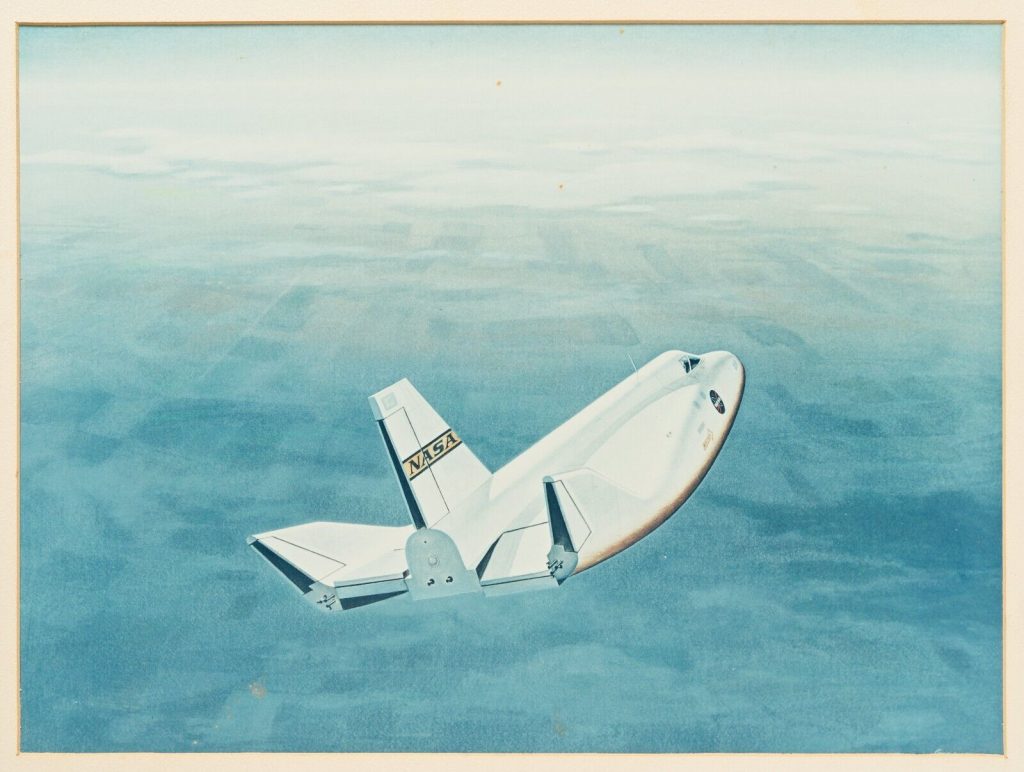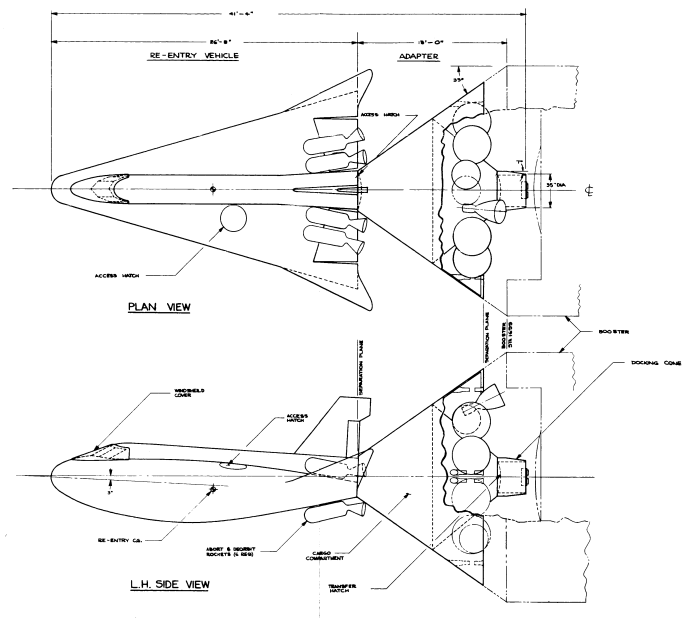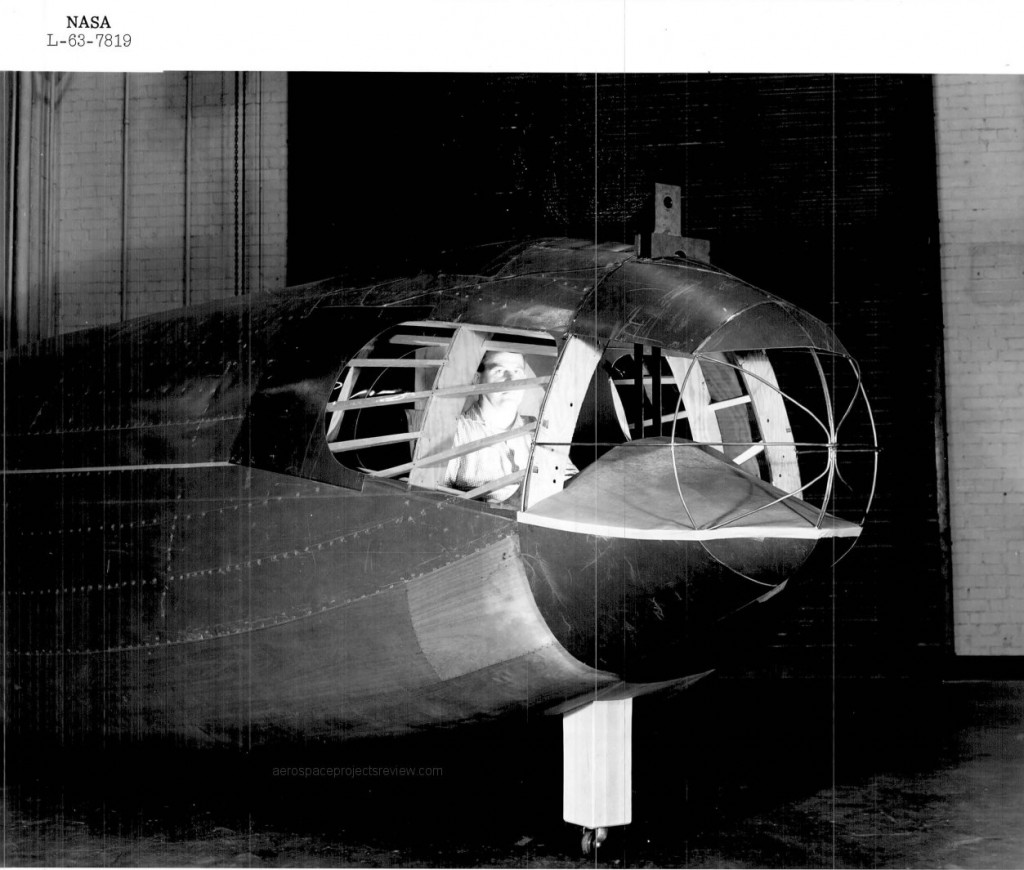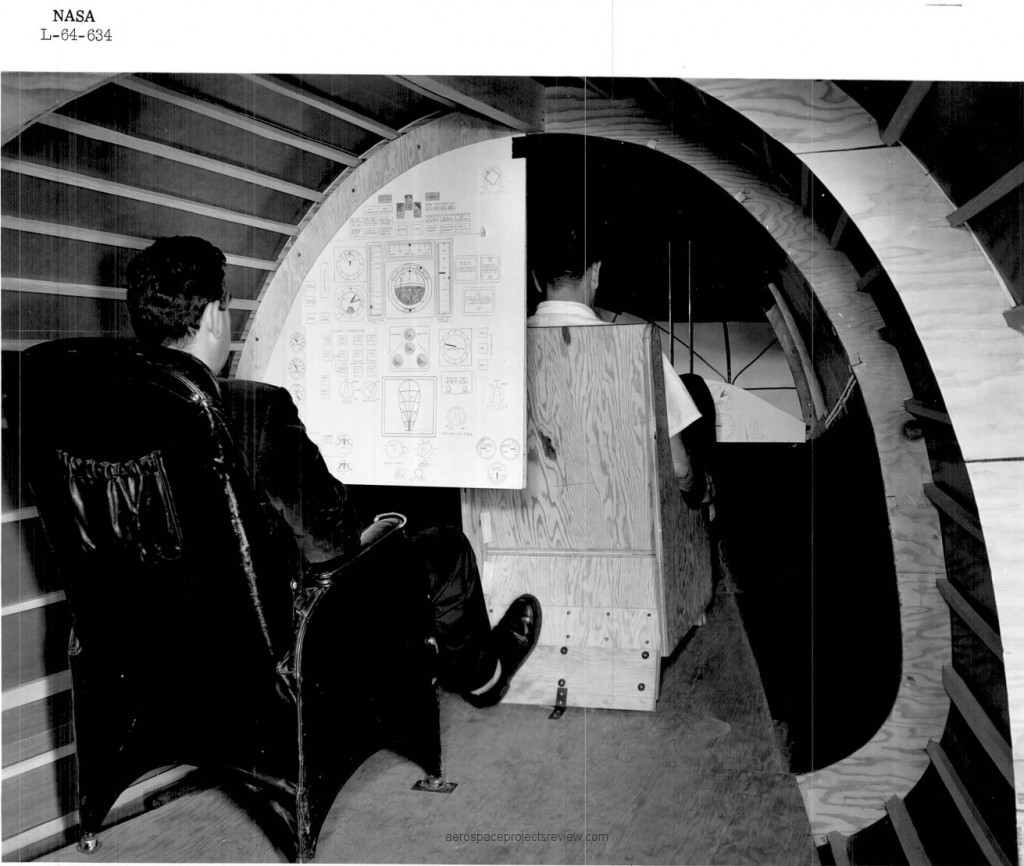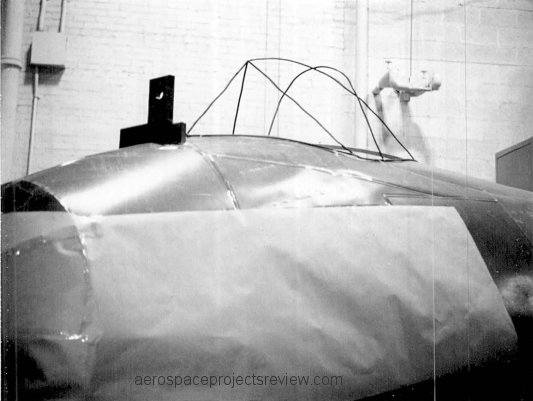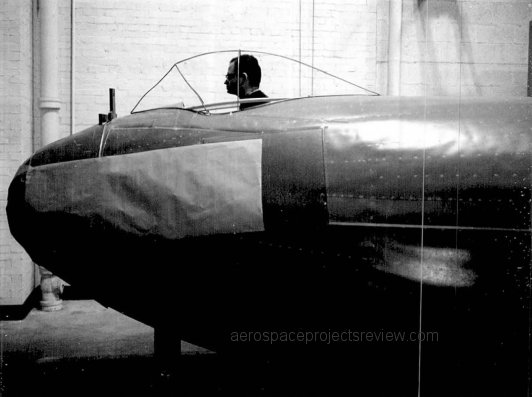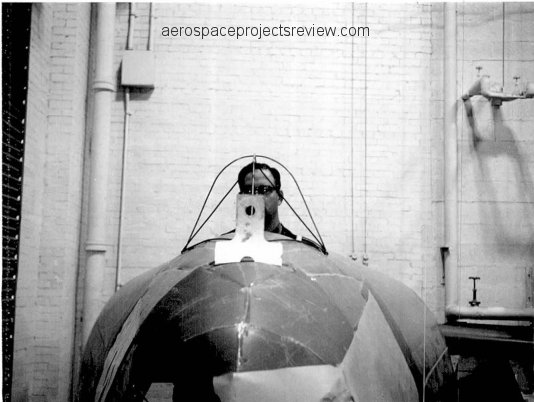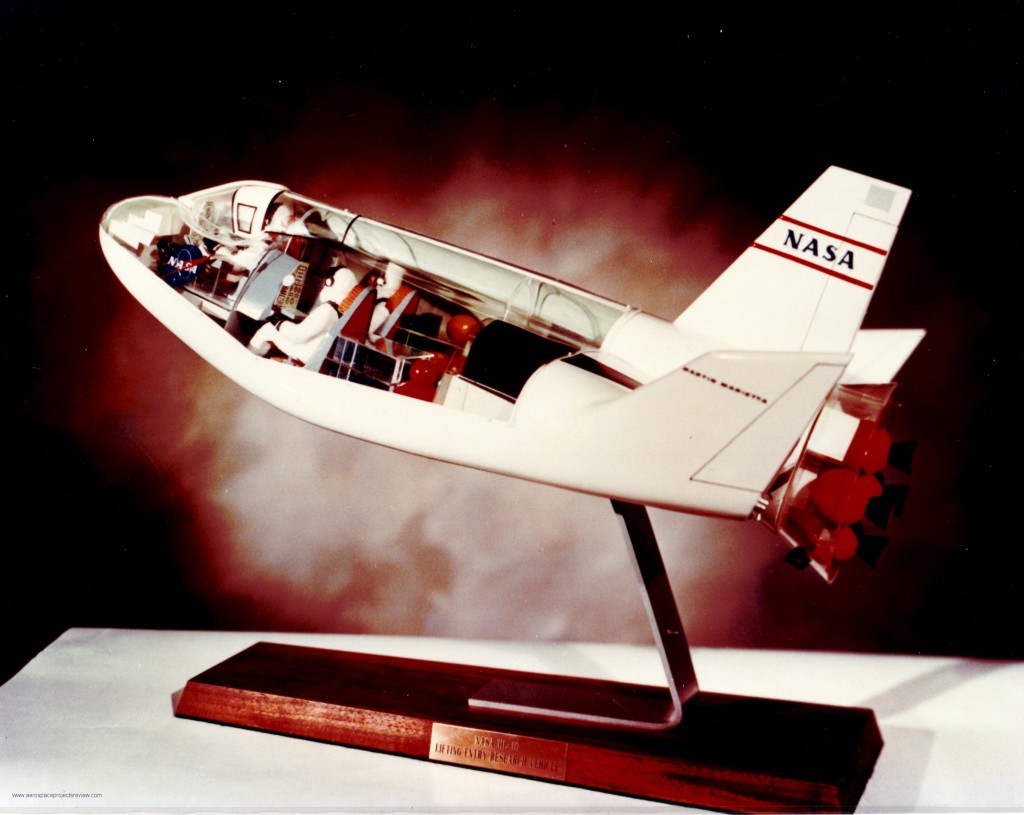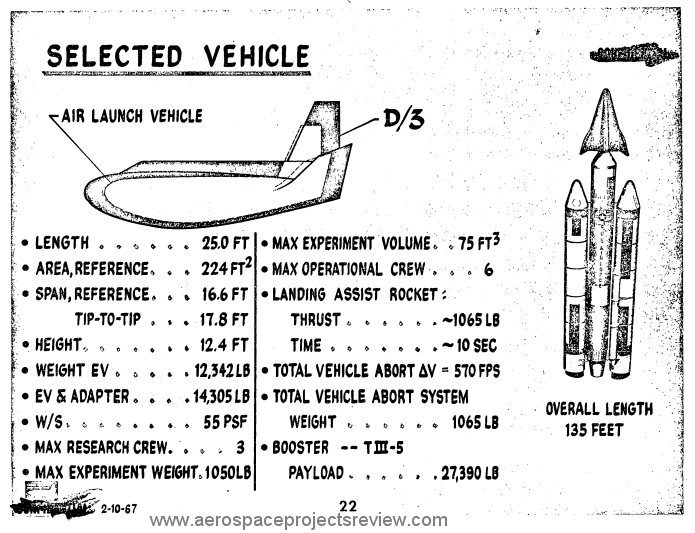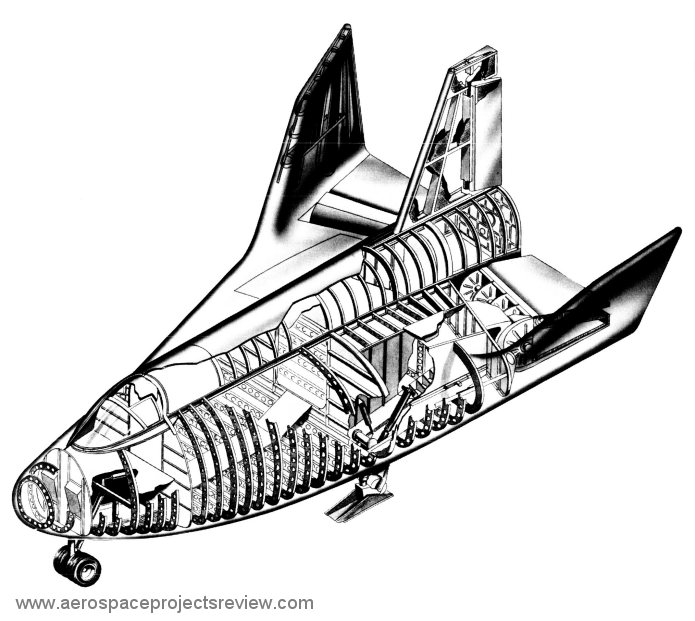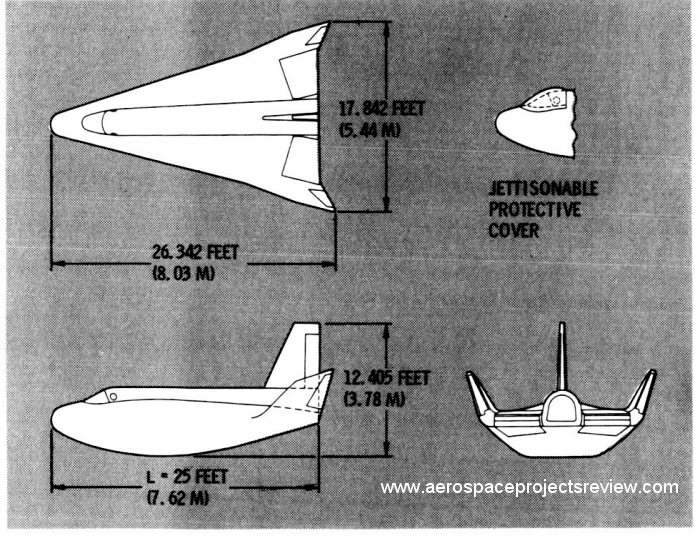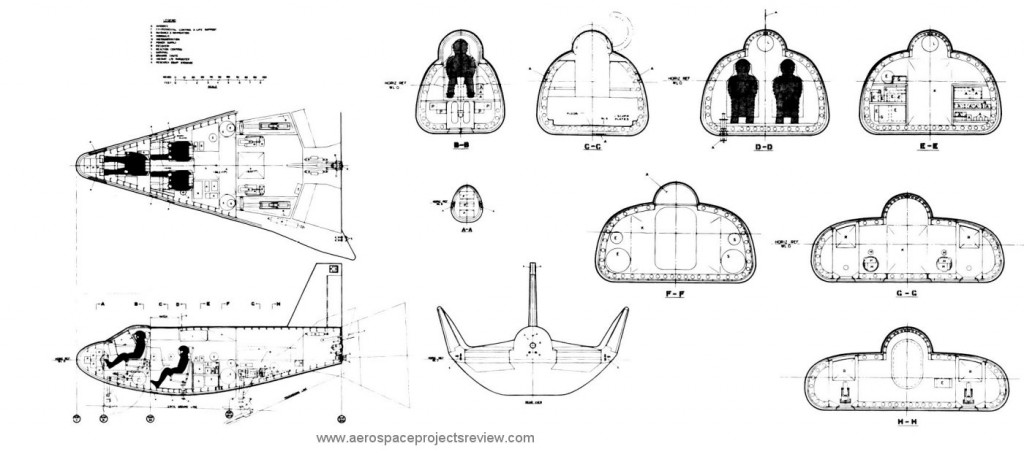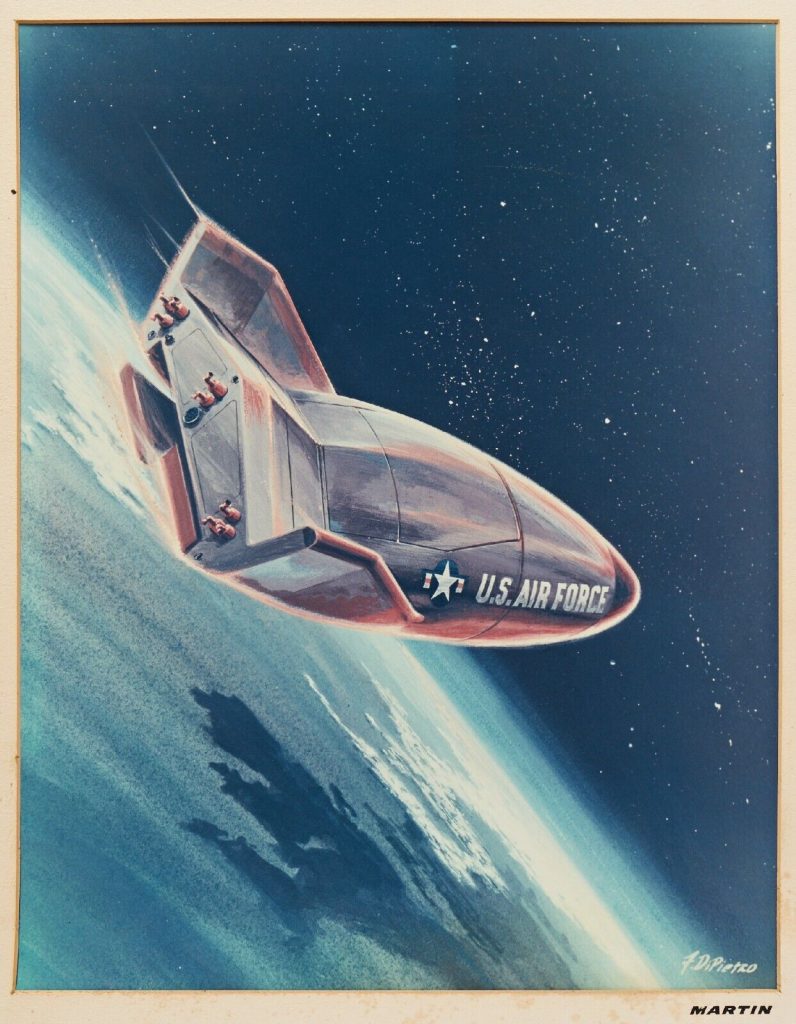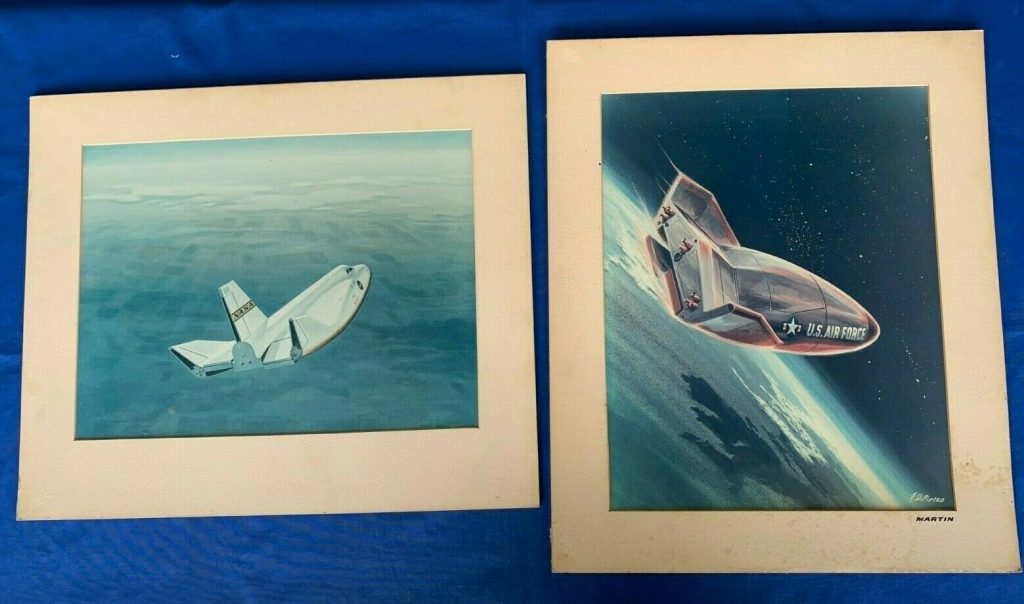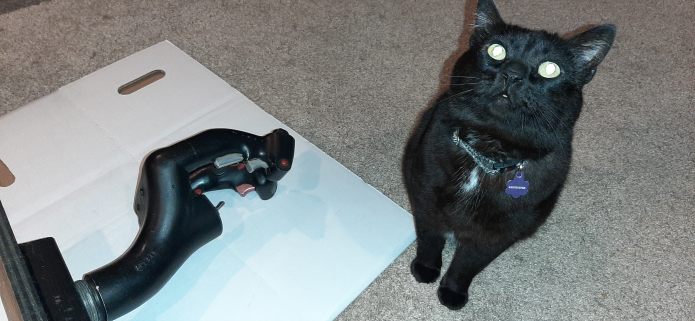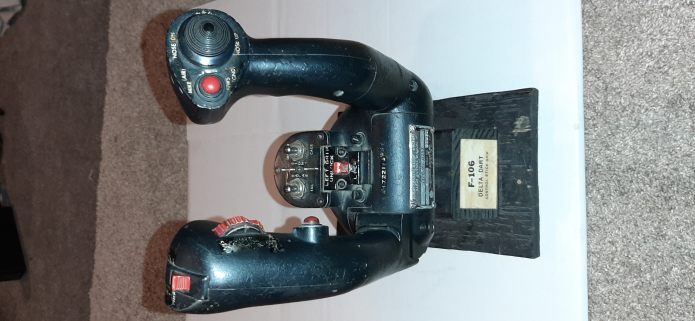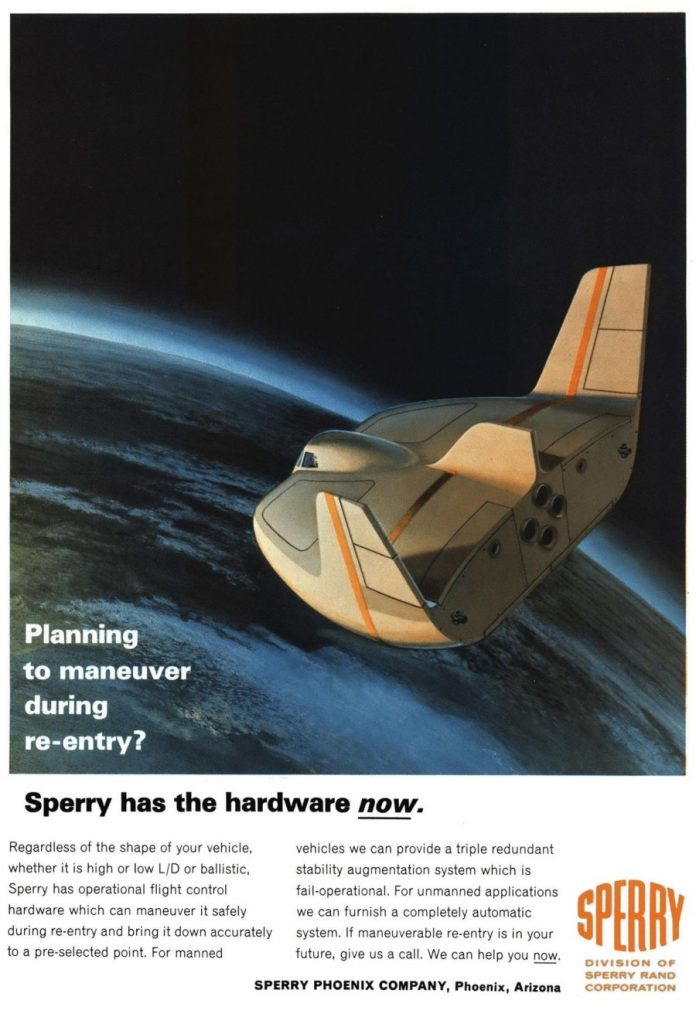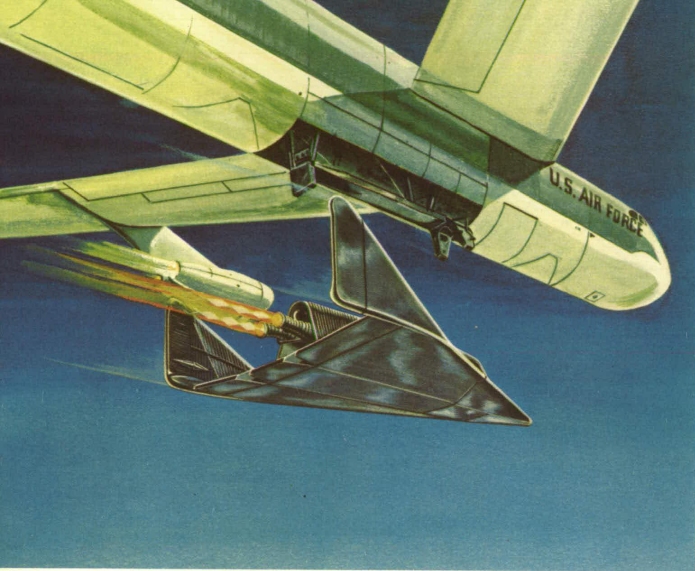The same seller trying to sell the Martin X-23 lithograph is also selling a lithograph of an orbital HL-10.
Turns out that these two lithographs are, at least based on stains on the X-23 matting, the same two lithographs sold just a few months ago. I’m dubious of turning around two lithographs that sold for $384 together for a grand or more each. The seller has a *lot* of high-value items… celebrity autographs and such, so he’s presumably doing well, but normally a lithograph like this would sell for well under $100.
Shrug.
Anyway, the art depicts an HL-10 coming in for a landing. The configuration includes a raised cockpit and reaction control thrusters at the tail; the white paint seems burned off along the underside. This would indicate an orbital craft after re-entry. Given the lack of an apparent hatch in the rear, this would not seem to be an operational orbital HL-10 (depicted hereabouts many times in the past) but instead a slightly smaller test vehicle, probably with a single pilot, possible lobbed on a once-around flight.
